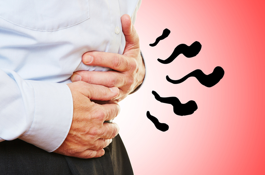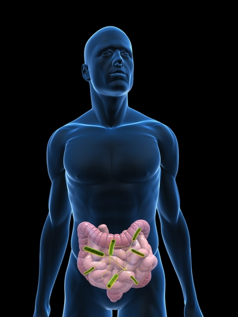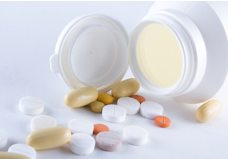Interview Q&A Series with Ben: Optimizing Focus & Energy Without Stimulants
Question: “What are neurotransmitters and why are they important? How can I optimize them to improve my training?” Your neurotransmitters ...

Question: “What are neurotransmitters and why are they important? How can I optimize them to improve my training?” Your neurotransmitters ...
Today I drove to the gym today heading into my first leg day of the week. My current training protocol ...
Cinnamon, one of the most undervalued, underestimated, and under-appreciated supplements around. When taken at effective doses, it packs a very ...
This inexpensive amino brings with it increased testosterone production & recovery making it a valuable adtiion to your supplement stack. ...
We've all seen the Bruce Lee-types, the small men with profound strength, and the contrary, muscle men that are all ...
Part 2 of good cop versus bad cop in the fat loss hunger wars - this time we’ll focus on ...
1. Margarine Not because it’s a fat. Real butter from grass fed cows is high in fats (good fats) like ...
Let’s face it – seeking out the right information can be confusing whether you are a bodybuilder or just an ...
Everybody's familiar with testosterone, the grand daddy hormone most synonymous with both muscle and manhood. Today we provide a comprehensive ...
For many of us, carbohydrates seem to be the most important and most debated macronutrient when speaking on building muscle. ...
Why Should You be eating Resistant Starch? RS is a starch that when digested in the large intestine, leads to ...
Of the major neurotransmitters, acetylcholine just might be the most important from a muscle building standpoint. As a major neurotransmitter ...
Bloated stomach? Endless flatulence? Wicked diarrhoea? Believe it or not, you don’t have to live with these symptoms.
 Ever wonder why it takes so long for the food that we eat to make its way through our stomach? As it turns out, one of the numerous reasons has to do with the importance of both prebiotics and probiotics in our stomach. Both prebiotics and probiotics are naturally occurring microorganisms found in our stomach and intestine, which are both known as the gastrointestinal tract or the GI tract. They both serve a different role. Both prebiotics and probiotics can be found in food, as well as in nutritional supplements.
Ever wonder why it takes so long for the food that we eat to make its way through our stomach? As it turns out, one of the numerous reasons has to do with the importance of both prebiotics and probiotics in our stomach. Both prebiotics and probiotics are naturally occurring microorganisms found in our stomach and intestine, which are both known as the gastrointestinal tract or the GI tract. They both serve a different role. Both prebiotics and probiotics can be found in food, as well as in nutritional supplements.
Firstly, I’d like to discuss the biology behind prebiotics and probiotics; secondly, I’d like to explore what prebiotics and probiotics are; and, thirdly, I’d like to make some food and supplementation recommendations to help you get them in.
Biology 101
 In the GI tract, there are thousands of varying species of bacteria, which, collectively weigh approximately 3 pounds. They ferment dietary carbohydrates, such as fibre and sugars that our body fails to digest and absorb in the mouth, stomach, and other areas of the GI tract. Bacteria found in the intestines transform these carbohydrates into beneficial short-chain fatty acids which promote a healthy GI tract. This process is similar to the bacterial fermentation of cabbage and milk when making sauerkraut and yogurt, respectively.
In the GI tract, there are thousands of varying species of bacteria, which, collectively weigh approximately 3 pounds. They ferment dietary carbohydrates, such as fibre and sugars that our body fails to digest and absorb in the mouth, stomach, and other areas of the GI tract. Bacteria found in the intestines transform these carbohydrates into beneficial short-chain fatty acids which promote a healthy GI tract. This process is similar to the bacterial fermentation of cabbage and milk when making sauerkraut and yogurt, respectively.
As resilient as our intestinal bacteria can be, their health can deteriorate. Such causes may include: medication use, especially antibiotics; stress leading to an overproduction of stress hormones; poor food choices that are high in sugar, preservatives, alcohol, processed food, and low in fibre; aggressive medical therapies such as radiation and chemotherapy; and excessive consumption of animal protein, especially if they’re highly processed (such as luncheon meats). Symptoms may include runny stools, bloating, weaker immune system, reduced carbohydrate digestion, and overproduction of yeast and harmful bacteria. Most of these symptoms can occur even in amongst those who engage in resistance training.
Prebiotics vs Probiotics:
While such symptoms are unpleasant, those of us who wish to get the most out of the money we spend on our food, beverages, and supplements, it may be reassuring to know that a disrupted GI tract can be easily treated with prebiotics and probiotics.
There are two ways to consume prebiotics and probiotics: through the food we eat and via nutritional supplements.
 So what exactly are prebiotics and probiotics?
So what exactly are prebiotics and probiotics?
While they both encourage the GI tract to contain a greater amount of healthy bacteria, they each have a different role:
– Prebiotics stimulate the growth of healthy bacteria in the GI tract.
– Probiotics help to restore beneficial bacteria in the GI tract.
(While reintroducing both prebiotics and probiotics into the GI tract is an effective way of improving it’s health, addressing the possible nutritional choices causing issues in the first place would be a wise first step. To do this, a popular and effective approach would be to partake in an, “elimination” diet”, or, “exclusion diet”.)
Additionally, benefits of having a healthy GI tract include: improved weight control; managing atherosclerosis; desirable stress hormone responses; and improved brain functions. A healthy balance of gut bacteria also aids the production of some vitamins (B and K); improves digestion and nutrient absorption; and many more. You can also say good riddance to pain, gas, bloating, reflux, allergies, nausea, food poisoning, and vomiting. Probiotics can also address irritable bowel syndrome (IBS), inflammatory bowel disease (IBD), and dermatitis.
In short, probiotics are anti-inflammatory.
Prebiotic and Probiotic-Containing Foods and Nutritional Supplements:
Probiotics
Some people prefer to purchase foods containing probiotics, while others like to get their probiotics through nutritional supplementation (or both).
Fermented foods consist of probiotics, and here are some suggestions:
– yogurt made with dairy, coconut, or soy
– buttermilk
– dairy or non-dairy kefir
– sauerkraut (fermented, not just soaked in vinegar)
– pickles (fermented, not just soaked in vinegar)
– kimchi
– miso
– tempeh
– soy sauce
– wine
– mould-enhanced cheese (such as blue cheese)
– bacterially fermented cheese (such as gouda).
Meats that have been preserved via traditional methods, such as the curing of salami, also use fermentation of Lactobacilli, which is a group of bacteria found in the probiotic bacteria, to preserve the food. Unfortunately, industrially produced cured meats are said to no longer have such health benefits.
If you decide to eat food that have probiotics and you have a healthy GI tract, then strive to have 1 to 2 servings of probiotic-containing foods on a daily basis. A greater consumption of such food may be necessary when you are hoping to prevent or alleviate a medical problem.
When purchasing nutritional supplements with probiotics, ensure that the product “contains a variety of strains and at least 1 billion or more active cells”. Consumption of between 3 and 5 billion live organisms would be a starting dose though you can consume up to 10 billion when you wish to alleviate a specific health concern.
Additionally, check the the label to confirm that it consists of ingredients such as ‘Lactobacillus rhamnosus CB‘ or ‘Bifidobacterium bifidium‘. There may be approximately ten to twenty different variations of the two groups of probiotic bacteria that are common in commercial products: Lactobacillus and Bifidobacterium.
When taking probiotics in a supplemented form, have it with food or drink.
One thing to keep in mind when purchasing probiotic products: they must be cooled during storage. If heated, they won’t survive. This includes pasteurization.
What about prebiotics?
Probiotics cannot stay alive without prebiotics. Therefore, consuming probiotics should be complemented by consuming prebiotics.
Like probiotics, prebiotics can be consumed through food or nutritional supplementation, and primarily come from foods that have complex starches.
Examples of such food are:
– legumes
– fruits
– whole grains
– and (fortunately for babies) human breast milk.
Be sure to consume 2 to 3 servings of prebiotic-containing foods on a daily basis when you have a healthy GI tract.
If you wish to consume prebiotics in a supplemental form, it’s advisable to take 2-4 grams of fructo-oligosaccharides (FOS) per day. It’s best to take this with probiotics in a nutritional supplement. Word of warning though, because the bacteria in prebiotics release toxins, you may feel worse before you feel better.
In short, a healthy GI tract means a happy body primed to function at its best, while you push your body to the limits during your training. Make wise choices with your food or nutritional supplements and don’t let your GI tract be the weakest link in your body!